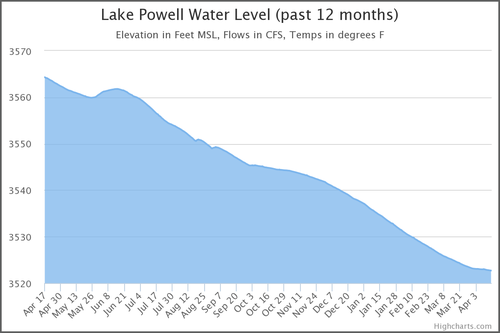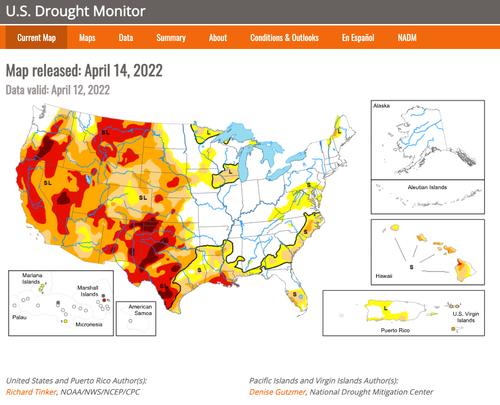Feds Weigh Emergency Actions As Lake Powell Hits Historic Low
The megadrought in the US West continues to wreak havoc as Federal officials weigh reducing water deliveries downstream on the Colorado River to prevent shuttering of a massive dam that provides power to millions of people, according to AP News.
Last month, Lake Powell dropped to 3,525 feet (1,075 meters), the lowest level since the federal government dammed the Colorado River at Glen Canyon (located in northern Arizona) more than five decades ago. This has caused officials at the Interior Department to propose holding back water at the dam to maintain the dam’s ability to generate power.
Tanya Trujillo, the Interior’s assistant secretary, warned if Lake Powell drops below 3,490 feet (1,063 meters), it will produce electrical grid uncertainty for the western part of the US, potentially affecting up to five million customers across Arizona, Colorado, Nebraska, Nevada, New Mexico, Utah, and Wyoming.
“We’re in crisis management, and health and human safety issues, including production of hydropower, are taking precedence,” said Jack Schmidt, director of the Center for Colorado River Studies at Utah State University.
The record low water level also comes as researchers have found the US West has been experiencing some of the driest conditions in more than 1,200 years.
Over the decade, drought conditions have worsened. Several major Californian reservoirs have dried up, forcing people to evacuate their boats and causing hydroelectric plants to shutter due to insufficient water supplies to spin turbines.
Reservoirs across California are well below their historical averages (as of Apr. 14).
According to the US Drought Monitor data, the US West is experiencing severe to extreme drought conditions.
New forecasts by federal government meteorologists may suggest drought conditions could deteriorate even more as there’s a 59% chance of La Niña for the Northern Hemisphere through summer. What this would mean is drier conditions.


